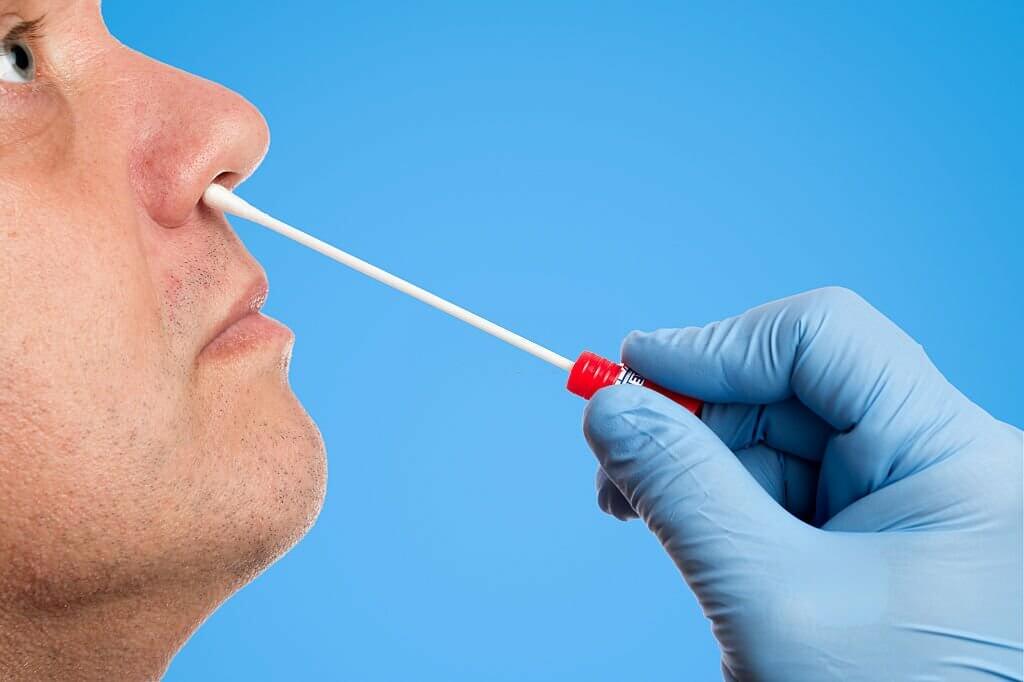Effective Nasal Swabbing for MRSA Screening: Dry or Moist?

Methicillin-resistant Staphylococcus aureus (MRSA) is a concerning bacteria that can colonize the nose and lead to serious infections. Screening for nasal carriage of MRSA by swabbing is important to identify and isolate carriers, and prevent spread. But does pre-moistening the swab improve detection? This study investigates dry versus moist swabbing for nasal MRSA.
What was studied?
Researchers compared dry and moist rayon swabs for nasal MRSA screening in 135 known MRSA carriers. They also tested dry versus moist rayon, polyurethane and nylon-flocked swabs in an artificial nose model inoculated with a known amount of MRSA. The aim was to see if pre-moistening swabs increases MRSA bacterial recovery.
No difference in MRSA recovery between dry and moist swabs in patients
In patients, there was no significant difference in the amount of MRSA recovered using dry versus moist rayon swabs. The median MRSA recovered was 25,000 colony-forming units (CFU) with dry and 32,000 CFU with moist swabs. Sensitivity for qualitatively detecting MRSA was also similar, around 80% for both dry and moist swabbing.
Likewise, no difference seen in artificial nose model
In the artificial nose model inoculated with MRSA, there were no significant differences in MRSA recovery between dry and moist swabs for rayon, polyurethane or nylon-flocked types. However, polyurethane and nylon swabs performed better than rayon in recovering higher CFU amounts.
Nasal MRSA burden varies widely among carriers
The researchers found a wide range of nasal MRSA burden among carriers. Quantities varied from less than 10 CFU up to over 10 million CFU per nostril. But the majority of positive patients had between 10,000-1,000,000 CFU.
Key conclusions and implications
Overall, the study found no advantage to pre-moistening nasal swabs for MRSA screening in carriers. Dry and moist rayon swabs performed equivalently in both the patient and artificial nose model tests.
The artificial model mimicked the patient results, indicating it could be a useful standardized tool for future swab and technique evaluations. The findings suggest dry swabbing is the preferred approach for simplicity, while choice of swab material also matters.
These results provide evidence that moistening swabs does not improve MRSA detection in nasal swabbing. Dry swabbing is adequate and simplifies the screening process. However, swab material influences how much MRSA is picked up. Polyurethane and nylon-flocked swabs recovered more MRSA than rayon in the model, highlighting that swab selection matters.
Click to View → Mantacc 96000G Foam Nasal Swab
References
Warnke P, Devide A, Weise M, Frickmann H, Schwarz NG, Schäffler H, Ottl P, Podbielski A. Utilizing Moist or Dry Swabs for the Sampling of Nasal MRSA Carriers? An In Vivo and In Vitro Study. PLoS One. 2016 Sep 14;11(9):e0163073. doi: 10.1371/journal.pone.0163073. PMID: 27626801; PMCID: PMC5023121.








